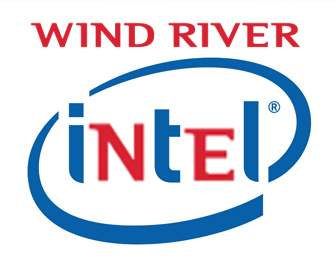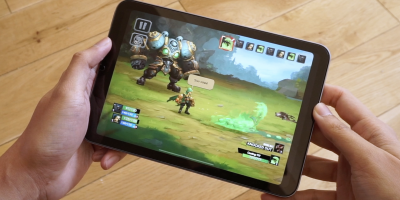 Intel and Wind River are both members of the Open Handset Alliance – one being listed as a semiconductor company and one being listed as a software company. Now they are both the same company – Intel just bought Wind River for $884 Million bucks ($11.50/share).
Intel and Wind River are both members of the Open Handset Alliance – one being listed as a semiconductor company and one being listed as a software company. Now they are both the same company – Intel just bought Wind River for $884 Million bucks ($11.50/share).
“Wind River is a leading software vendor in embedded devices, and will become part of Intel’s strategy to grow its processor and software presence outside the traditional PC and server market segments into embedded systems and mobile handheld devices. Wind River will become a wholly owned subsidiary of Intel and continue with its current business model of supplying leading-edge products and services to its customers worldwide.”
Intel wants a piece of the growing mobile pie and Wind River is their fork. It appears the company will remain branded as Wind River and will merely become a wholly owned subsidiary – but I would fully expect Intel’s name to become much more prominent in the mobile space over the next year or two as the companies build synergies.
This is a pretty significant story, especially considering Wind River has 200+ employees working on Android.
Here is the entire press release from Intel and from WindRiver:
Intel to Acquire Wind River Systems for Approximately $884 Million
SANTA CLARA, Calif., June 4, 2009 – Intel Corporation has entered into a definitive agreement to acquire Wind River Systems Inc, under which Intel will acquire all outstanding Wind River common stock for $11.50 per share in cash, or approximately $884 million in the aggregate. Wind River is a leading software vendor in embedded devices, and will become part of Intel’s strategy to grow its processor and software presence outside the traditional PC and server market segments into embedded systems and mobile handheld devices. Wind River will become a wholly owned subsidiary of Intel and continue with its current business model of supplying leading-edge products and services to its customers worldwide.
“This acquisition will bring us complementary, market-leading software assets and an incredibly talented group of people to help us continue to grow our embedded systems and mobile device capabilities,” said Renee James, Intel vice president and general manager of the company’s Software and Services Group. “Wind River has thousands of customers in a wide range of markets, and now both companies will be better positioned to meet growth opportunities in these areas.”
“Our combination of strengths will be of great benefit to Wind River’s existing and future customers,” said Ken Klein, Wind River Chairman, president and CEO. “As a wholly owned subsidiary, Wind River will more tightly align its software expertise to Intel’s platforms to speed the pace of progress and software innovation. We remain committed to continuing to provide leading solutions across multiple hardware architectures and delivering the same world-class support to which our customers have grown accustomed.”
The acquisition will deliver to Intel robust software capabilities in embedded systems and mobile devices, both important growth areas for the company. Embedded systems and mobile devices include smart phones, mobile Internet devices, other consumer electronics (CE) devices, in-car “info-tainment” systems and other automotive areas, networking equipment, aerospace and defense, energy and thousands of other devices. This multi-billion dollar market opportunity is increasingly becoming connected and more intelligent, requiring supporting applications and services as well as full Internet functionality.
The board of directors of Wind River has unanimously approved the transaction. It is expected to close this summer, subject to certain regulatory approvals and other conditions specified in the definitive agreement. Upon completion of the acquisition, Wind River will report into Intel’s Software and Services Group, headed by Renee James.
Wind River – A Leader in Embedded Software
As an Intel subsidiary, Wind River will continue to develop innovative, commercial-grade software platforms that support multiple hardware architectures that are optimized for the needs of its many embedded and mobile customers. The acquisition will boost Wind River’s Intel-architecture focused sales as it gains access to the company’s technology investments, brand, employees and global sales force.Founded in 1981, Wind River is a publicly held company with headquarters in Alameda, Calif., with more than 1,600 employees and operations in more than 15 countries. During its fiscal year ended Jan. 31, 2009, Wind River reported annual revenues of $359.7 million.
Wind River develops operating systems, middleware (software found between an OS and software application), and software design tools for a variety of embedded computing systems. Its main products include VxWorks, the market-leading proprietary and multicore-ready real-time operating system, and commercial-grade Linux software platforms. The company also provides design services and software expertise, including custom-built solutions, development tools and device testing products.
With thousands of customers, Wind River technology is relied upon by most major computer and networking communications companies, and used by corporations and government agencies such as Alcatel-Lucent, BMW, Boeing, Bombardier Transportation, Mitsubishi, Motorola, NASA, Sony, Verizon and many more.
The deal must pass regulatory approval and that will likely occur this summer.











Hi Rob
There is an extensive history and back story leading up to this acquisition. Android is still a small part of Wind business, but the acquisition covers a lot of other ground.
See my blog at
http://linuxpundit.wordpress.com/2009/06/04/
Bill Weinberg
My guess is that the net out is a 1+1=<2 outcome but that Intel factored that into the price that they paid for the company.
If anything, Wind River’s inability to breakout, despite a once Microsoft-like position of dominance, is a by-product of their failure to meaningfully go “up the stack” and away from their historical focus on the silicon layer as a primary differentiation point.
In other words, if Wind River had enabled the next generation of Cisco and Apple killers by providing more differentiated OEM-in-a-Box offerings, ala what Google is now trying to do with Android, they would not be staring at a $900M market cap and relatively flat revenues, margins and stock price.
In fairness to them, it’s not like anyone else stands out as knocking the ball out of the park in the embedded domain, so this is perhaps just the last chapter (for now) in a book that began when Wind River and Integrated Systems merged back in 1999.
But to be clear, there is very little software systems DNA within Intel, despite the fact that there are many thousands of software engineers within the company.
Hence, barring a pretty serious religious conversion, software will always be the conduit to sell more silicon, which gates the likelihood of truly innovative solutions coming out of the combined entity.
(Disclosure: I sold a company – Rapid Logic – to Wind River, and had two portfolio companies that Intel was an investor in, so based on 12+ years of direct experience).
Cheers,
Mark
—
READ: Innovation, Inevitability and Why R&D is So Hard
http://thenetworkgarden.com/weblog/2008/06/innovation-inev.html